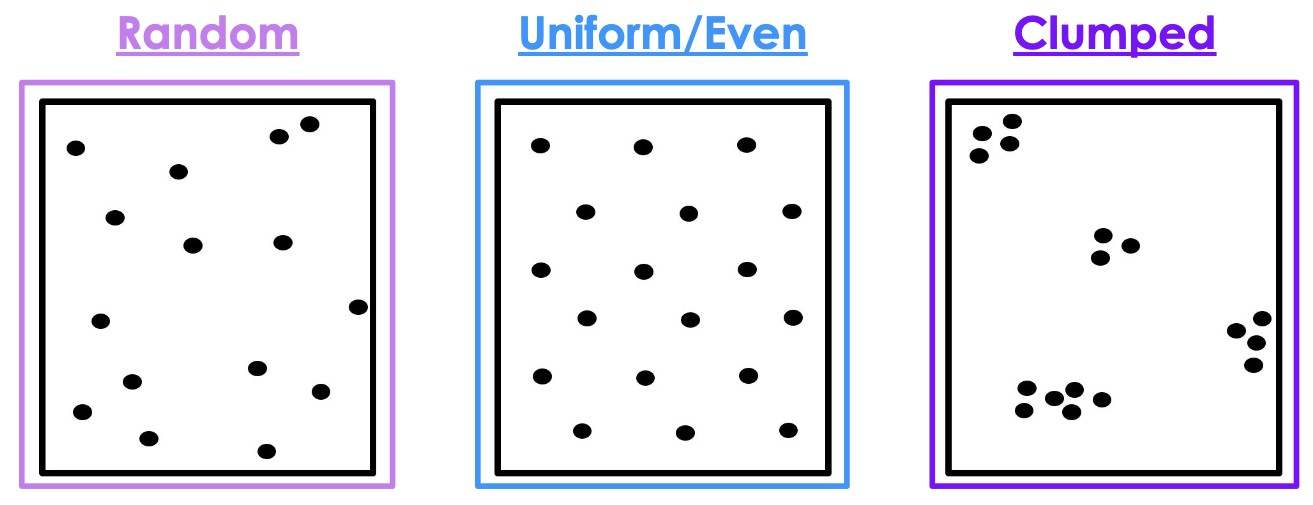-
Factors that contribute to high population density
Birth (natality) and immigration
-
Factors that contribute to low population density
Death (mortality), emigration
-
Logistic exponential population growth
Population grows quickly at first and then levels off
-
Exponential population growth
Population grows without limit
-
Sketch three types of dispersion patterns

-
Examples of density-dependent limiting factors
Competition, predation, parasitism, disease
-
Examples of density-independent limiting factors
Weather changes, pollution, natural disasters
-
Vocab: population
a group of organisms of the same species living in the same place
-
Vocab: population density
Measures the number of individual organisms living in a defined space
-
Vocab: survivorship curve
A graphic representation of mortality patterns
-
Vocab: carrying capacity
The theoretical maximum population that a given environment could support
-
Vocab: limiting factors
Aspects of the environment that limit the size a population can reach

